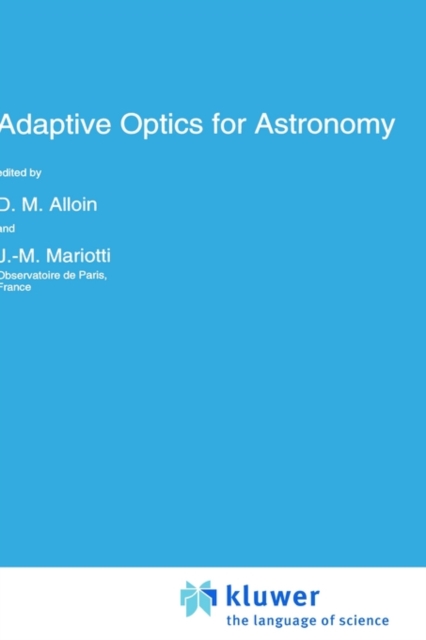
Adaptive Optics for Astronomy : Proceedings of the NATO Advanced Study Institute, Cargese, Corse, France, June 29-July 9, 1993 Hardback
Edited by D. M. Alloin, J. M. Mariotti
Part of the NATO Science Series C series
Hardback
- Information
Description
For many astronomers, Adaptive Optics is something like a dream coming true.
Sinee 1609 and the first observations of celestial bodies performed with the help of an optieal teleseope, astronomers have always fighted to improve the 'resolving power' of their instruments.
For a long time, engineers have trimmed the optieal quality of the teleseopes, until they finally reaehed the barrier set by the atmospherie turbulence, a few seconds of are.
At that point, the intrinsic quality of the site beeame a major issue to establish new observatories with modern telescopes, and astronomers started to desert the urban skies and to migrate toward mountains and deserts.
This quest has been sueeessful and a few privileged sites, where the average natural 'seeing' is close to 0. 5", are now hosting clusters of giant telescopes of the 4 m and soon 10 m class.
Yet, this atmospherie limit corresponds in the visible wavelength range to the diffraetion limit of a 20 em telescope only.
The loss was severe: a faetor 20 in angular and several hundred in peak energy eoncentration, i. e. in deteetivity of resolution very faint objeets. In the beginning of the seventies, two doors half opened to provide a way out of this dead-end.
First, the technique of speckle interferometry (and its various related developments) has allowed to restore the diffraetion limit of large telescopes at visible and infrared wavelengths (see, e. g.
Information
-
Unavailable
- Format:Hardback
- Pages:338 pages, biography
- Publisher:Kluwer Academic Publishers
- Publication Date:31/03/1994
- Category:
- ISBN:9780792327486
Information
-
Unavailable
- Format:Hardback
- Pages:338 pages, biography
- Publisher:Kluwer Academic Publishers
- Publication Date:31/03/1994
- Category:
- ISBN:9780792327486